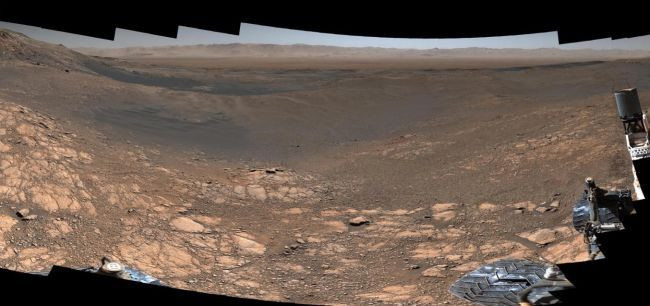Engineers Develop Levitating Nanocardboard Aircraft That Could Explore Mars

KEY POINTS
- Engineers developed levitating aircraft that could explore Mars
- The nanocardboard flyers have a very simple design
- The flyers could explore Mars and collect samples
A team of engineers was able to develop tiny levitating aircraft that could be used to explore the surface of Mars. Compared to NASA’s Mars Helicopter, the engineers believe their aircraft would perform better due to their simple design.
The engineers referred to their invention as the nanocardboard flyers. Each of the tiny flyers weighs only about a third of a milligram and does not rely on moving parts to propel itself. Instead, the flyers use their unique design to levitate from the ground.
According to the engineers, the overall design of the flyers was inspired by the corrugations or ridges of paper cardboard. Following the same concept, the engineers designed the flyers with a hollow aluminum oxide body with ridges patterned by micro-channels.
These micro-channels create a temperature gradient within the flyer by pushing air through its hollow body. This process allows the flyer to naturally float in the air.
As noted by the engineers, this design will work well on Mars’ environment due to the planet’s weak gravity and thin atmosphere. These conditions will allow the air flowing through the micro-channels to lift more weight, allowing the flyer to stay in the air for a longer period of time.
According to lead engineer Igor Bargatin of the School of Engineer and Applied Science at the University of Pennsylvania, the simple design of the nanocardboard flyer makes it more suitable to explore the Red Planet than the Mars Helicopter, a flying probe designed by NASA.
“The Mars Helicopter is very exciting, but it's still a single, complicated machine,” he said in a statement. “If anything goes wrong, your experiment is over, since there's no way of fixing it. We're proposing an entirely different approach that doesn't put all of your eggs in one basket.”
Through sensors attached to their body, the flyers would be able to collect valuable data regarding the environmental conditions on Mars. Aside from data collection, Bargatin noted that the tiny levitating machines could also acquire soil samples from Mars.
“In addition to carrying sensors, our flyers could simply land and have grains of dust or sand passively stick to them, then transport them back to the rover so it doesn't need to travel as far,” he stated.
Details about the nanocardboard flyers were presented in a new study published in Advanced Materials.
© Copyright IBTimes 2025. All rights reserved.





















